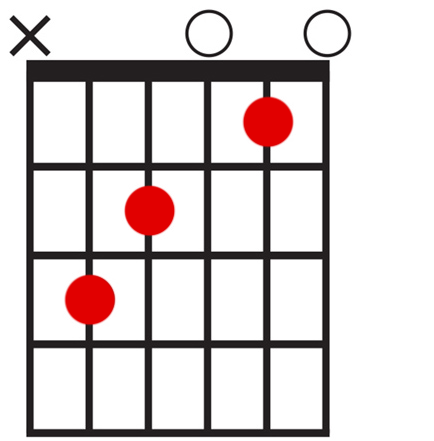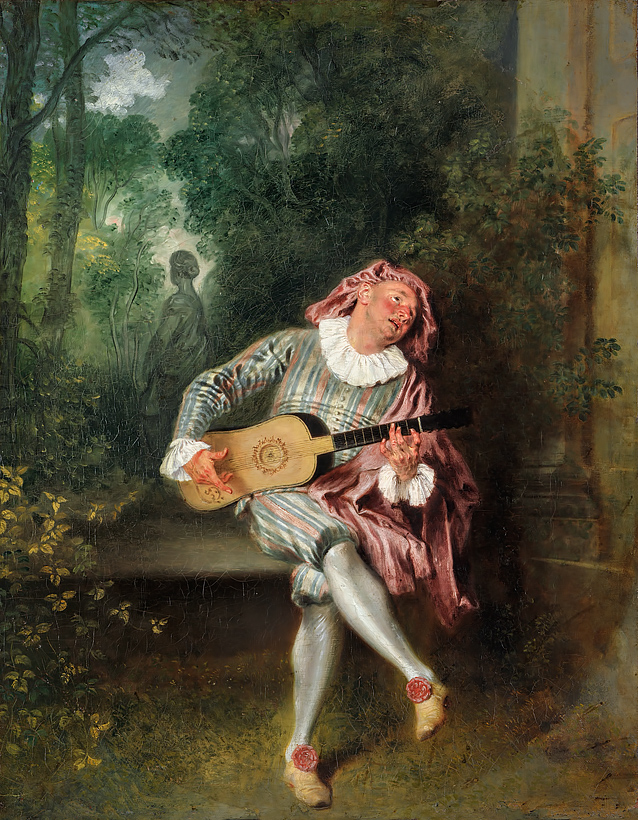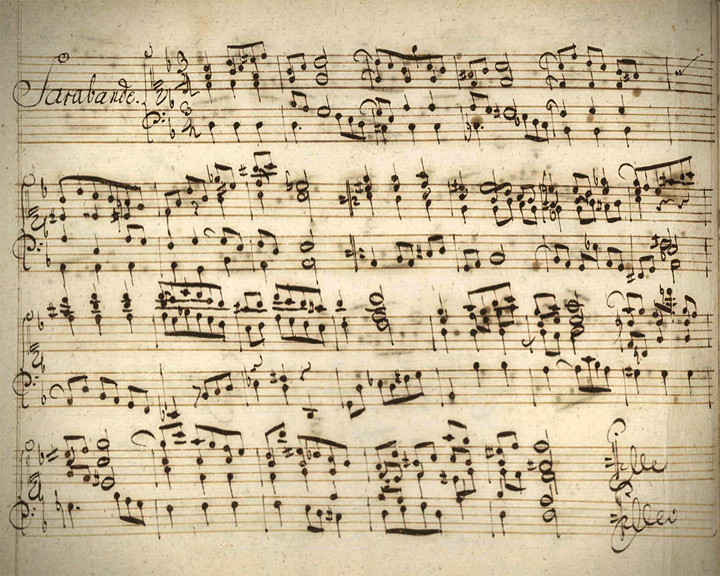|
|
||||||||||||||||
.
|
| The key signature in Jesu, Joy of Man's Desiring has a sharp on the top line, i.e., the F line. Thus, you must sharp all F notes throughout the piece, including the F on the fourth string. |
Jesu, Joy of Man's Desiring (third line) | All F notes are sharp.

The F-sharp at measure 10 requires use of a stretched out fourth finger to reach the fourth fret. Spot practice measures 10 and 11 to increase fluidity.
Pickup Notes
Like Amazing Grace, Jesu begins with a pickup. However, instead of a one beat pickup, Jesu features a two beat pickup (two quarter notes): count one beat and begin playing on beat two. However, you'll drop in the groove more easily if you countdown an extra measure: count 1-2-3-1 and begin on 2.
Jesu, Joy of Man's Desiring (first line) | The pickup notes begin on beat 2.

The final measure of Jesu has only one beat, rather than three, in order to connect seamlessly to the pickup notes at the beginning when you repeat.
Tempo
Jesu, Joy of Man's Desiring sounds best performed at a brisk allegro tempo (120 BPM+). Begin practicing at a slow tempo and gradually work up to allegro.
Listen to the Track
Before practicing, watch the video to help get the feel of the piece in your ears.
Jesus, Joy of Man's Desiring | Peter Kun Frary
Play the Melody Now!
Practice the melody of Jesu until smooth. Play along with the audio track or video to help shore up your rhythm.
Jesu, Joy of Man's Desiring | Melody only—play along!

Once the melody of Jesu, Joy of Man's Desiring is sounds smooth, work on the chords.
 Chords
Chords
Due to the fast tempo of this piece, the Simple Strum 3/4 is recommended: strum once per measure on the downbeat.

Jesu, Joy of Man's Desiring | Melody and chords

Download | Jesu, Joy of Man's Desiring PDF
Jesus, Joy of Man's Desiring | Spring '23 MUS 121D Students
Mezzetin | Antoine Watteau, 1684–1721 | Mezzetin using his thumb on the bass strings of a Baroque guitar. | Metropolitan Museum of Art

Vocabulary
ritornello, cantata
 |
 |
 |
©Copyright 2024 by Peter Kun Frary | All Rights Reserved


